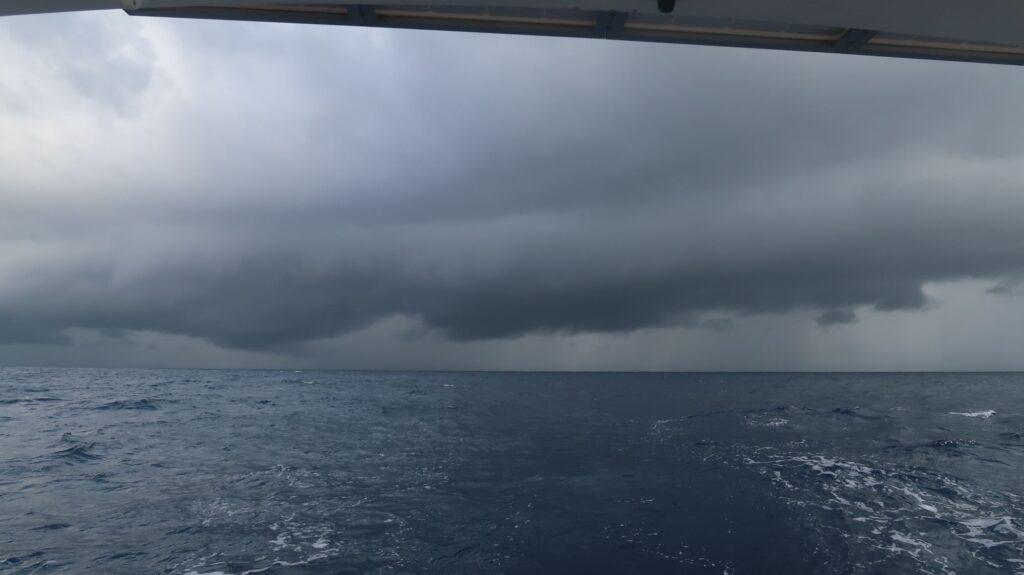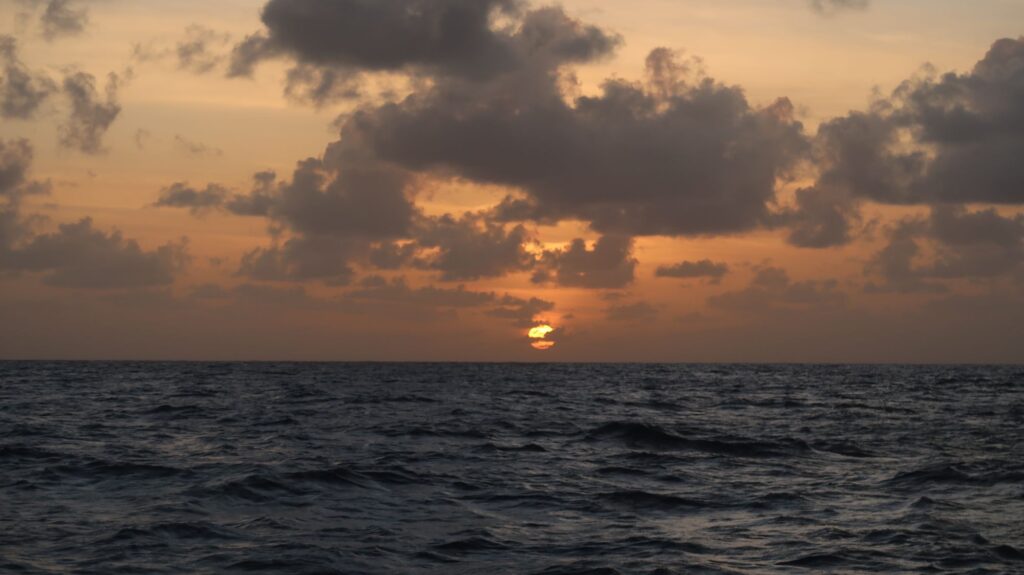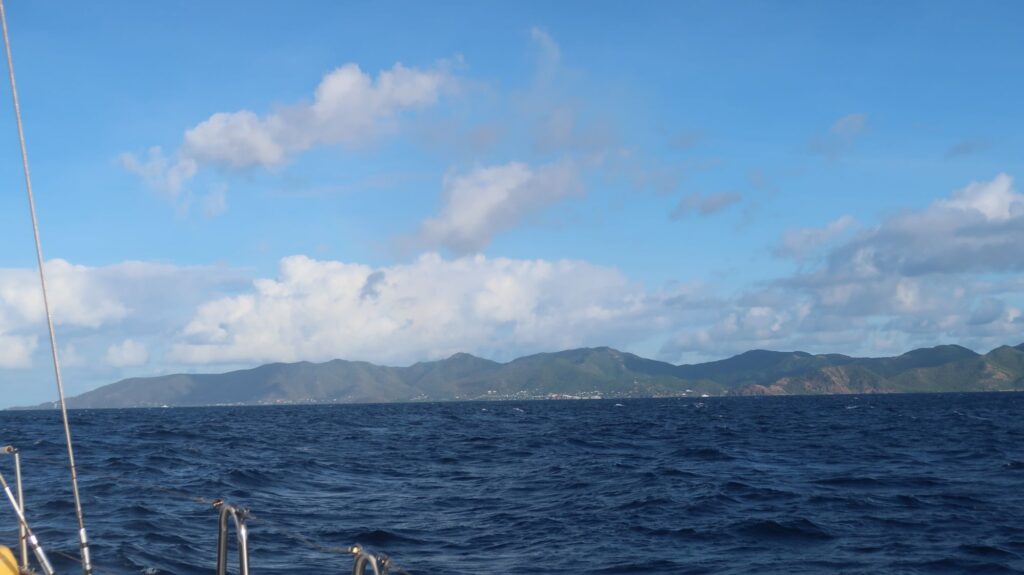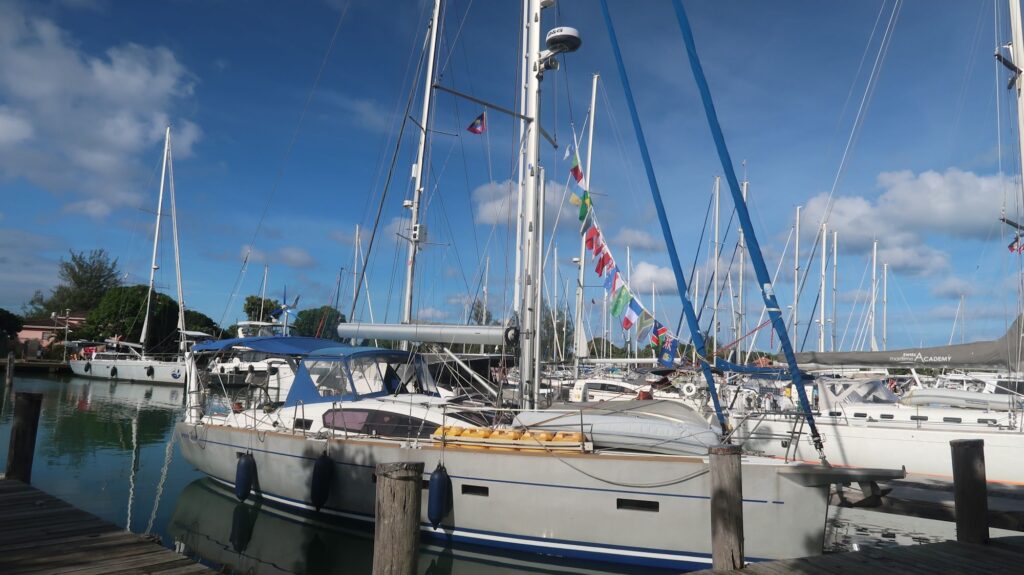Conch fritters, stormy cocktails and a great reggae band at the Sea Dream restaurant was a pretty good first night in Jolly Harbour after a 4,000 nm, 30 day passage from St. Helena Island in the South Atlantic.
The first half of the passage, south of the equator, was sublime with solid following winds and sunny skies. Crossing the equator into the InterTropical Convergence Zone (ITCZ) the weather became cloudy with occasional rain squalls, one of which accelerated the wind from 15 kts to 40 kts, and change direction by 40 degrees, in less than 2 minutes. Fortunately, that one occurred during the daytime and I saw in coming, confirmed its location and approach speed on radar, and was able to reduce sails in preparation for it hitting me. If a squall comes at night when I’m trying to sleep it will usually be a big surprise causing me to quickly scramble out of the rack and get on deck to reduce sails.
North of the equator there are also strong, looping currents that retarded my progress. The weather forecast showed a large area of very little wind along my direct route (about 300 degrees true) from St. Helena to Antigua. I had to divert west from that to avoid the worst of the “no wind” zone. Still, I had single digit wind speeds for a few days and was lucky to get 4 kts boat speed. When you’re trying to get passed a crossing current of 2 kts with slow boat speed it results in a lot of crabbing, sometimes up to 30 degrees. It’s miserable sailing. I finally ran the engine for 6 hours to get out of the last of the strong crossing currents. The wind eventually picked up and I had a reasonably fast remaining week into Antigua although the 1-2 meter waves were right on the beam of the boat causing a lot of rolling and an uncomfortable ride.
Finally motoring into Jolly Harbour, I disengaged the autopilot (AP) and was shocked to discover my manual steering range at the helm was greatly reduced to about +/- 10 degrees from the normal range of +/- 35 degrees. I was barely able to steer the boat enough to dock by the immigration and customs office. Once I had completed the clearing-in process I was faced with getting my boat into my berth at the marina, typically requiring a lot of tight turns and full rudder steering range and the bow thrusters. I called the marina dockmaster on the VHF and explained my problem. With his help and another guy, we finally got the boat passed the tight turn into my berth.
Needless to say, I can’t leave Antigua with this steering problem. Once tied up in my berth, I started taking things apart. My boat has 2 rudders, 2 steering wheels (one connected to each rudder), 2 AP computers (one as a backup) and 2 AP drive units which convert the signals from the AP computer into the “muscle” needed to actually move the rudder. There is a heavy steel bar that connects the rudders to always keep them in sync. After disconnecting the mechanical components, it was clear the port side drive unit had failed such that it restricted the rudder range of motion. Once I disconnected that drive unit from the rest of the steering system I had my full range of steering back. It’s unlikely I can fix it so it looks like a replacement is needed. Sourcing it, getting it to Antigua, and installing it will be a challenge.
I thought my stop in Antigua would be a holiday but it seems an offshore sailboat is a demanding taskmaster never relenting on what’s required to keep it going.



